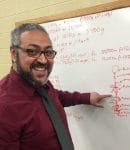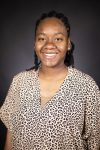Monday at Southern Arkansas University, Biology Professor Dr. Claude Baker was busy reviewing with his classes the birds and bird calls of the region in preparation for the16th annual Great Backyard Bird Count (GBBC) this weekend.
Feb. 15-18, SAU faculty and students in biology of birds, ecology and vertebrate zoology classes will participate in the volunteer research weekend, and they encourage everyone in Columbia County to join with them in the project.
The GBBC is a joint project for the Cornell Lab of Ornithology and Audubon, with Canadian partner Bird Studies Canada, but is also a global initiative that allows anyone, anywhere in the world with Internet access to participate.
Participants simply watch birds at any location for at least 15 minutes, tally the numbers of each species they see, and report their tallies online at www.BirdCount.org.
Dr. Baker, known for his creative teaching methods that combine learning with service opportunities, said that he has also had his classes participate in Frogwatch USA for the past five years, as well as getting his vertebrate zoology class involved in learning common birds and calls as a standard part of the curriculum.
“What a great service idea it is to add this experience to an existing exercise,” he said.
Baker expects to see the normal birds crop up in the area during the bird count. This time of year, there will be plenty of sightings of juncos, goldfinches, cardinals, robins, grackles, starlings, sparrows, bluebirds, crows, mourning doves, Canada geese and several others.
Students conducting their watch at Lake Columbia might encounter coots, mallards, wood ducks, geese, anhingas (water turkeys) and other species of ducks.
“The American white pelicans that stop over at Lake Columbia are one of our most interesting migrants,” said Baker. “They have a nine-foot wingspan and appear all white in the water. Later these birds will travel to their summer breeding grounds far to the north.”
Baker, a bird watcher since his high school years, asserts that at least two bald eagles have been sighted in the area by faculty and students.
Asked why he incorporates bird count participation in his teaching, he said, “Try to imagine the forest in late spring and summer without the song of the wood thrush. What a sad loss that would be.”
“Classroom feeder watch involves my students in real-life scientific investigations. It extends the classroom into the local environment,” he added. “Bird watching fosters an appreciation for wildlife that cannot easily be duplicated in the classroom by other means. For me, it’s the best, and probably cheapest, therapy for all the stress that is encountered in life and it’s just plain fun.”
According to the website, this year, anyone visiting the GBBC website will be able to see bird observations pouring in from around the world and contribute their own tallies. Global participation will be made possible thanks to eBird, a real-time online checklist program that the Cornell Lab and Audubon are integrating into the GBBC for the first time.
The GBBC is open to anyone of any skill level and welcomes bird observations from any location, including backyards, national parks, gardens, wetlands, and urban landscapes. The four-day count typically receives sightings from tens of thousands of people reporting more than 600 bird species in the United States and Canada alone. Baker encourages others to join in and contribute to the effort.
An online bird guide provides a tutorial on bird species at http://www.allaboutbirds.org.
Participating is easy. To learn more about how to join the count, get bird identification tips, plus downloadable instructions, web buttons, and flyers, visit www.BirdCount.org.
The count also includes a photo contest and a prize drawing for participants who enter at least one bird checklist online. Portions of the GBBC site are also now available in Spanish at www.ContandoAves.org.



